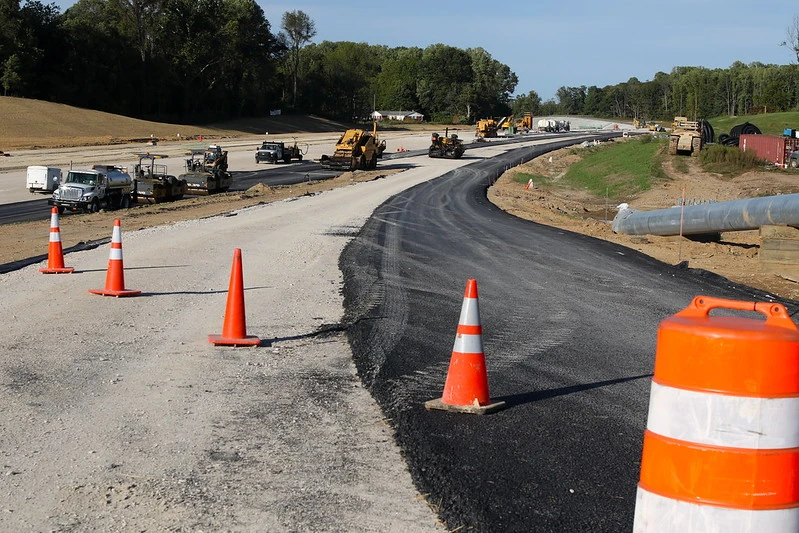On Saturday, President Joe Biden took a significant step towards ensuring the financial stability of the United States by signing a bipartisan bill that suspends the government’s $31.4 trillion debt ceiling. This move comes after intense negotiations between President Biden and House of Representatives Speaker Kevin McCarthy, ultimately resulting in the passage of the bill by both the House of Representatives and the Senate. The timely agreement averted what would have been a first-ever default, providing a much-needed respite for the nation. While this development has broad implications for the overall economy, it particularly impacts the construction industry, specifically the roads and bridges sector. Additionally, the bill introduces notable changes to the National Environmental Policy Act (NEPA), marking significant reforms since 1982.
Infrastructure Reforms and NEPA
The debt ceiling bill contains several components aligned with the Building U.S. Infrastructure through Limited Delays & Efficient Reviews (BUILDER) Act, which has critical implications for the construction industry. Most significantly, the bill streamlines the infrastructure project review process by reforming NEPA. The following changes aim to reduce project costs and expedite the approval process:
1. Implementation of the One Federal Decision: NEPA-reviewed projects will now adhere to a unified permitting schedule established by a designated lead agency. Furthermore, multiple agencies involved in a project will utilize a single document for reviews.
2. Time and Page Limits: The bill sets specific deadlines for completing environmental documents, and project applicants have a right to take action if agencies fail to adhere to these deadlines.
3. Assistance from Project Sponsors: Project sponsors will be permitted to assist agencies in conducting reviews, thus expediting the overall process.
4. Streamlined Categorical Exclusions: Agencies can adopt categorical exclusions used by other agencies through an efficient process, further expediting project reviews.
5. Clarification of “Major Federal Action”: The bill defines a “major federal action” under NEPA, which includes a list of actions that do not qualify as such, providing clarity and guidance.
It’s important to note that judicial review was not included in the BUILDER Act but is expected to be considered separately later this year.safety guidelines. By entrusting your project to our experienced professionals, you can expect a seamless and accident-free job site experience.
Coalition’s Request to the EPA
In response to the NEPA reforms, a coalition of organizations, including the American Public Works Association (APWA), sent a letter to the Environmental Protection Agency (EPA) urging collaboration with Congress. They requested that the EPA ensures rulemaking designating per- and polyfluoroalkyl substances (PFAS) as hazardous substances is accompanied by legislation providing statutory relief for public works. The coalition emphasized that public works should not be held liable for PFAS under the “polluter pays” principle, as they neither manufactured nor profited from these substances.
Additional Components of the Bill
1. Spending Limits and Non-defense Discretionary Spending: The debt ceiling has been lifted until January 2025, with non-defense spending capped at current fiscal levels for 2024. From fiscal year 2025, spending limits will increase by 1%. After 2025, spending limits will transition into unenforceable appropriations targets rather than statutory caps. Sharp cuts to non-defense discretionary spending are avoided, maintaining essentially flat funding levels.
2. Exclusions and Infrastructure: The bill’s recisions do not impact the Bipartisan Infrastructure Law or the IRA (Internal Revenue Service).
3. Clean Water Act: While significant changes to the Clean Water Act are not included in the bill (H.R. 3746), it remains an area of potential future legislative consideration.
4. Highway Infrastructure Appropriations: The bill includes a recision of $2.2 billion for highway infrastructure that was previously appropriated in the CRRSAA (Coronavirus Response and Relief Supplemental Appropriations Act).
5. Administrative Pay-Go: The bill introduces the first-ever Administrative Pay-Go, which holds government agencies accountable for the full cost of executive rules and regulations. This provision ensures that any costly rules and regulations implemented by agencies must be deficit-neutral, requiring them to find dollar-for-dollar savings within the government.
Closing Statements
President Biden’s signing of the bipartisan bill suspending the debt ceiling has far-reaching implications for the economy, with significant effects on the construction industry and environmental policy. The NEPA reforms included in the bill aim to streamline the infrastructure project review process, reducing costs and expediting approvals. The changes represent the most substantial reforms to NEPA since 1982 and demonstrate a commitment to improving the efficiency of infrastructure development while maintaining environmental standards.
Furthermore, the bill’s provisions on spending limits, exclusions, and administrative accountability provide additional measures for financial stability and responsible governance. It is important to note that while the bill addresses critical issues, some matters, such as judicial review and potential changes to the Clean Water Act, may be considered in separate agreements later on.


